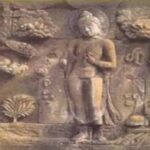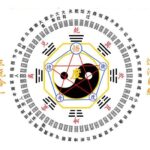Recent Comments
- Chodpa on The Place where the Primordial Speaks
- Chodpa on The Cuckoo of Presence
- Afzar on Bodhidharma’s teacher, Prajnatara
- Vajragoni on Audiobook is released
- Scott on Audiobook is released
-
Recent Posts
Categories
- A Darkness Visible
- A Docetic Assessment
- A Mystical Odyssey through the Sagathakam
- AI Creations
- Akṣayamatinirdeśasūtra
- Akṣhobhya’s Pure Land
- Ālaya-vijñāna
- Anūnatvāpūrṇatvanirdeśaparivarta
- Ariyapariyesanā Sutta
- Ascending the Noble Mountain of Primordial Perfection
- Asceticism
- Ashtavakra Gita in Light of the Unborn
- Audiobook
- Bankei Zen
- Beyond the Ascent
- Beyond the Rainbow Body
- Black Dragon Eye Mandala
- Bodhicitta
- Buddhadharma
- Buddhism’s Black Holes
- Buddhist Anecdotes
- Buddhist Hells
- Buddhist Meditations on the Tarot
- Chuang-Tzu
- Contemporary Musings
- Ḍākiṇī
- Dāsbodh
- Dharmakaya Abbey
- Dharmakaya Stick
- Divine Revelation
- Doctrine of the Void
- Dust Contemplation
- Ekacitta: Advanced Studies in Dark Zen
- Entry into the Dharmadhātu
- Eremitical Dhyani Meditations
- Exploring the Book of Revelation
- Gnostikos
- Hsin Hsin Ming
- Journey to the Center of the Mind
- Karma and Rebirth
- Korean Sŏn
- Kulayarāja Tantra—The Motherly Buddha
- Little Office of Our Lady of the Void
- LSD and Psychedelic Buddhism
- Māṇḍukya Kārikā
- Mañjuśrī Teaches Prajñāpāramitā
- Māra and Satan
- Meister Eckhart
- Mud and Water: Bassui Zen
- Mystagogia
- Nirvana
- Notes from the Iron Stupa
- Nothingness in Nāgārjuna and John of the Cross
- Obscure Religious Cults
- Preparation for the Afterlife
- Primordial Qigong
- Reflections on the Saṃdhinirmocana Sūtra
- Spirituality
- Springtime with Tozen
- Terma: A Mind Film by Vajragoni
- The Afterglow
- The Awakening of Faith
- The Bhagavad Gita
- The Book of Bodhi
- The Cloud of Unknowing in Light of the Unborn
- The Diamond Sutra
- The Divine Ātman
- The Divine Liturgy of Vajrasattva
- The Doctrine of Awakening
- The Dragon Mind of Zen Tarot
- The Elucidation of Consciousness
- The Experience of No-Self
- The Great Perfection of the Unborn Mind: A Book of Privy Counseling
- The Heart Sutra
- The Hermit's Den
- The Khaggavisāṇa Sutta: A Rhinoceros Horn
- The Lankavatara Sutra
- The Lankavatarian Book of the Dead
- The Lion's Roar of Queen Śrīmālā
- The Lotus Sutra
- The Mahāparinirvāṇasūtra
- The Naga Chronicles
- The Platform Sutra
- The Ratnagotravibhāgaśāstra
- The School of the Spirit
- The Secret Golden Light of the Unborn
- The Soul
- The Śūrańgama Sūtra
- The Sutra of Primordial Enlightenment
- The Tathāgatagarbhatārā Tantra
- The Udāna
- The Unborn Mind Mythos
- The Unborn Mind Sessions
- The Unborn Odyssey: A Novel
- The Vajrasamādhi Sutra
- The Vimalakirti Sutra
- The Yogasūtras of Patañjali
- The Zen Teaching of Bodhidharma
- The Zen Teaching of Instantaneous Awakening
- The Zen Teachings of Huang Po
- Theologia Mystica
- Tozen Teaching
- Tsung-mi: An Intimate Study
- Unborn I Ching
- Unborn Light Reiki
- Uncategorized
- Vasubandhu and the Absolute
- Wisdom from the Masters
- Wordsworth and Zen
- Yoga of the Manomayakāya
- Zen
- Zuowang
Archives
- October 2024
- August 2024
- February 2024
- January 2024
- December 2023
- November 2023
- October 2023
- September 2023
- August 2023
- July 2023
- June 2023
- May 2023
- April 2023
- March 2023
- February 2023
- January 2023
- December 2022
- November 2022
- October 2022
- September 2022
- August 2022
- May 2022
- April 2022
- March 2022
- February 2022
- January 2022
- December 2021
- November 2021
- October 2021
- September 2021
- August 2021
- May 2021
- April 2021
- March 2021
- February 2021
- January 2021
- December 2020
- November 2020
- October 2020
- September 2020
- August 2020
- May 2020
- April 2020
- March 2020
- February 2020
- January 2020
- December 2019
- November 2019
- October 2019
- September 2019
- August 2019
- June 2019
- February 2019
- January 2019
- December 2018
- October 2018
- August 2018
- April 2018
- March 2018
- February 2018
- January 2018
- December 2017
- November 2017
- October 2017
- September 2017
- August 2017
- May 2017
- April 2017
- March 2017
- February 2017
- January 2017
- December 2016
- November 2016
- October 2016
- September 2016
- August 2016
- July 2016
- May 2016
- April 2016
- March 2016
- February 2016
- January 2016
- December 2015
- November 2015
- October 2015
- September 2015
- August 2015
- July 2015
- June 2015
- May 2015
- April 2015
- March 2015
- February 2015
- January 2015
- December 2014
- November 2014
- October 2014
- September 2014
- August 2014
- May 2014
- April 2014
- March 2014
- February 2014
- January 2014
- December 2013
- November 2013
- October 2013
- September 2013
- August 2013
- May 2013
- April 2013
- March 2013
- February 2013
- January 2013
- December 2012
- November 2012
- October 2012
- September 2012
- August 2012
- May 2012
- April 2012
- March 2012
- February 2012
- January 2012
- December 2011
- November 2011
- October 2011
Meta
Monthly Archives: March 2022
The Soul: Epilogue

This concludes our compendium series on the nature of the soul. It covered sundry religious and philosophical motifs ranging from ancient Greek to present-day quantum soul realizations. The one salient theme or thread woven throughout is the principium of the life-force that animates. In Homer, it is the psyche (ψυχή) and shadowy-substance. Plato first presents the immortality of the soul as emanating from the Supernal Realms of Transcendent Forms. Aristotle considered the soul as a mechanism that animates all aspects of lifeforms, thus considered as the Actualized Principle of Animation. For St. Paul the soul is considered in three-fold fashion: a) Soul as vitality, life principle. b) Soul as Spiritual Body and c) Soul as Universal Principle. Gnostic notions continued to expand on St. Paul’s themes, with the added distinction between psychic and pneumatic aspects. Plotinus emphatically taught the idea of the One and Absolute; hence, for Plotinus, the vehicle of the soul is all about a journey home to the One and Unborn. In St. Augustine the soul was subservient to the spirit (spiritus) and he devised a seven fold tier system of the soul. The Byzantine-Orthodox tradition and St. Maximus states that the soul (like the ancient Greeks in our study) is the “Life-Force” that animates the body and its functions. As function it is mostly identified with Spirit and is non-corporal in nature. It is immortal in stature and cannot be soiled by any exterior phenomenal obtuse perceptions. It is a self-moving principle and thus exits the body upon death. Our portion on Christian Mystics and the soul focused on the ascetical theologies of Dionysius the Areopagite, as well as the Carmelite saints John of the Cross and Teresa of Avila. Perhaps the most fascinating segment of the series presented the North American Indian Soulology, with its vast network of various soul-extensions. The great spiritual system of Advaita Vedanta measured the soul as synonymous with the Self, or Divine Ātman. The Chinese-Taoist segment considered soul as a spiritual-force, one that is balanced between Yin and Yang energies. Buddhist notions focused on the problem of the theory of Anatman and the realization that it’s a matter of falsely equating the five-skandhas with True Soul or Self. The Quantum Factor brought our series to its mystic climax that asserts its Cosmic-nature: “I don’t see the soul and consciousness as an epiphenomenon, or product, of matter. It’s just the other way around: I see matter as an epiphenomenon of soul and consciousness. The material world has evolved from the absolute vacuum of space—the home of the soul.” (Dr. Fred Alan Wolf) Our series then concluded with the Lankavatarian notions of the no-soul, or personal soul vs. the ultimate realization of the notion of “soulness” that is synonymous with Self and Mind.
The Lanka and the no-soul

In order to have the best overall comprehension of Unborn Mind Zen’s notion of a soul, one first needs to turn to the best foundational source, the Lankavatara Sutra. As we do so keep in mind this question: Does a Buddha have a soul?
Posted in The Soul, Zen
Tagged imagelessness, Lankavatara Sutra, pudgala, soulness, two-fold egolessness
Leave a comment
The Quantum Factor

The narrative for a Quantum-Soul Factor begins with what are known as NDE/OBEs, or after-death experiences. The notion that conscious activity exists after death has been deeply engrained into the psyche of both Eastern and Western religions throughout the millennium. For example, The Tibetan Book of the Dead is a mystic manual for guiding the soul through a 49 day process of encountering both “peaceful” and “wrathful” deities in the hope of successfully navigating through these illusionary realms that would prevent another womb birth, or if all else fails then a favorable reincarnation. There are some striking similarities between the Tibetan Book of the Dead and today’s contemporary after death-soul experiences that were made popular by researchers such as Dr. Raymond A. Moody and Elizabeth Kubler-Ross. Further still, significant quantum theories predict that end-of-life brain activity exists independently of biochemical and spacetime geometry.
Posted in The Soul
Tagged Dark Ray, Dionysius the Areopagite, Dr. Fred Alan Wolf, NDE/OBEs, Quantum Soul
Leave a comment
Dignāga and Anātman

For the Buddhist segment in our series we need to turn to the general father of Buddhist epistemology, and additionally the doctrine of the No-Soul (Self). Dignāga (480-540 CE) was a profound Buddhist scholar and logistician and elucidates in his epistemology that there are essentially only two ‘instruments of knowledge’ or ‘valid cognitions’ (pramāṇa); “perception” or “sensation” (pratyaksa) and “inference” or “reasoning” (anumāṇa). In his magnum opus, the Pramāṇa-samuccaya, he writes:
Advaita Vedanta & the Self

We are now entering into more familiar ground with less emphasis on soul extensions as Advaita Vedanta places them as secondary to the all-encompassing and Cosmic notion of the Self. The Self is synonymous with Ātman or the Absolute Parabrahman. Firstly, let’s break down its etymology:
Posted in The Soul
Tagged Advaita Vedanta, Atman, Nisargadatta Maharaj, Parabrahman, Ramana Maharshi, Self, Yogananda
Leave a comment

